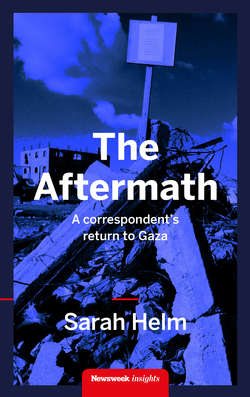Читать книгу The Aftermath - Sarah Helm - Страница 7
3 Besieged
ОглавлениеThe day I “went in” – the expression used nowadays for visiting Gaza – a single Palestinian returning from an exceptional hospital visit in Jerusalem was “going back in”.
People today call Gaza a giant prison. As I approached the Erez Crossing and saw, for the first time, the hulking perimeter wall, it certainly looked more like a prison than ever before.
And yet Gazans on the other side are not there for committing a crime. The vast majority are descendants of Palestinians who came to Gaza 66 years ago for refuge during the 1948 war. Before 1948, many of these Gazans had lived along this coast in towns like Ashkelon, which they still call al-Majal. During the fighting, which engulfed them in 1948, they abandoned their homes and fled to the relative safety of this coastal strip, only to find the towns they once lived in became a part of Israel and they could not return.[1]
In its early days Gaza looked more like an encampment than a prison as the refugees lived in tents, provided by the United Nations Relief and Works Agency (UNRWA), established to care for and protect the refugees until a permanent solution to their displacement was found; the refugees themselves – like other Palestinians who fled at the time – insisted on a right to return to their original homes.[2] Over the years, as the refugees found they couldn’t return home, their tents were replaced by breeze block huts and the camps took on a more permanent character, like shanty towns.
As the second-generation refugees were born and families needed more space, many moved out of the refugee camps altogether and built their own houses elsewhere along the strip. Gazan refugees now comprise 1.2 million of the 1.8 million “prisoners”. Of these more than half have moved out of the camps into Gazan villages and towns.
The refugee family clans have usually stayed together, with 60 or even more living in one building or one neighbourhood. The new generation are still defined as “refugees” by the United Nations – and their status still remains to “be decided”.
Like Palestinians everywhere they call events of 1948 the nakba – catastrophe – a moment when Palestinian identity was fatally fractured, leading to a loss of hope. For Gazans the loss is particularly poignant as their former homes – lying just across the perimeter walls and fences – are so close.
Prison or not, Gaza today is certainly besieged; its land borders north and east adjoin Israel, which controls all movement in and out, and its coastal waters are patrolled by Israeli gunboats. The southern border adjoins Egypt, which has also shut itself off from Gaza in recent months.
Gaza has no port and no airport. Tunnels built in recent years by Hamas and leading to Egypt [for smuggling goods] and to Israel [for military incursions] are now all shut off.
For road traffic in from Israel a single crossing point exists to the south at Kerem Shalom. For human traffic the only way in and out of Gaza is through the main northern checkpoint at Erez. A large and modern terminal, Erez was envisaged as an international border when the chance of peace existed, but it always had a “dual use” and serves today as a prison gate: permission to pass must be sought from Israel and for most Gazans – whose travel documents or so-called passports all bear numbers issued and controlled by Israel – exit is refused. The day I “went in” – the expression used nowadays for visiting Gaza – a single Palestinian returning from an exceptional hospital visit in Jerusalem was “going back in”. Like me, he was impaled on the prongs of narrow turnstiles. At the far side we were both ejected into an endless walkway – an open-sided funnel, stretching across a no-man’s land. I followed my fellow travellers’ white plastic bags as they swung wildly, slashed by horizontal rain and wind, which roared down the funnel.
1 See The Birth of the Palestinian Refugee Problem (1947-1949) by Benny Morris, Cambridge University Press 1987 ↵
2 See Gaza A History by Jean Pierre Filiu, C.Hurst & Co Publishers, London 2014 ↵
